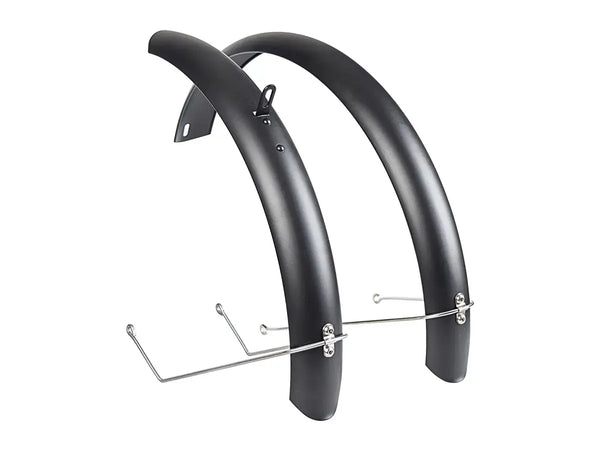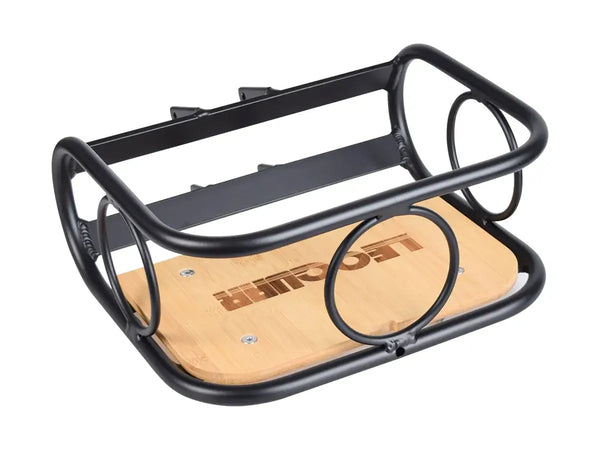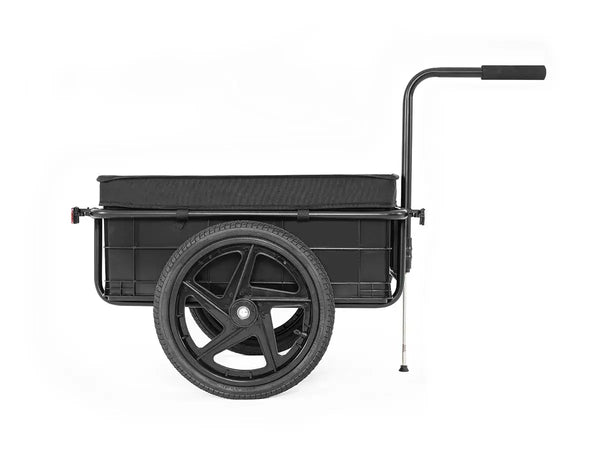
Best Ebike Accessories: Everything You Need to Know in 2025
Getting Started with Your New Electric Bike
So, you've got a new electric bike. The first ride feels amazing, but then you wonder what comes next. The world of electric bike accessories can feel overwhelming. However, setting up your ride doesn't have to be hard.
The key is knowing what you need right away versus what you can add later. This guide helps you find the best ebike accessories for your needs by focusing on three main areas: safety, comfort, and utility. E-bike sales are growing fast around the world, and their role in how we get around is becoming more important. Making smart choices about accessories matters more than ever. We'll show you a simple system to make sure every dollar you spend makes your rides better.
A Rider-Focused Framework
Instead of just listing products, we've set up our tips in a clear way to help you decide. This system helps you choose based on your budget and how you plan to use your e-bike-whether for daily trips to work, weekend fun, or serious cargo hauling. By thinking in levels, you can build your perfect setup without wasting money.
- Level 1: Must-Have Items: Essential gear for safety and security that every rider needs from day one.
- Level 2: Comfort and Usefulness Upgrades: Accessories that turn your e-bike from a fun toy into a practical daily ride.
- Level 3: Advanced Rider Gear: High-tech equipment for riders who want the best performance and features.
Level 1: Must-Have Items
This level covers the basics you absolutely need. These items are not optional - they form the base of a safe and secure e-bike experience. We strongly suggest budgeting for these as part of your first e-bike purchase.
Helmets: Your Top Priority
Your helmet is the most important accessory you will ever buy. E-bikes let you go faster than regular bikes, making head protection a must. When picking a helmet, look for safety features like MIPS or WaveCel, which help protect against rotational forces during a crash.
Always make sure your helmet meets safety standards. You can check this by looking for stickers that show it follows CPSC, ASTM, or MIPS safety standards. For better visibility, especially if you ride in the city, we recommend helmets with built-in front and rear LED lights. They make you much more visible on the road, both day and night.
Locks: Protecting Your Investment
Electric bikes cost a lot of money and sadly attract thieves. A cheap cable lock won't cut it. Buying a good lock is as important as the bike itself. Understanding the different types helps you choose the right one.
| Lock Type | Security | Easy to Carry | Best Use |
|---|---|---|---|
| U-Lock | High | Moderate | Locking the frame to a fixed object in risky areas. |
| Chain Lock | High to Very High | Low | Home security or locking to large, odd-shaped objects. |
| Folding Lock | Moderate to High | High | Good balance for commuters who need security and easy storage. |
Look for locks with Sold Secure ratings (Diamond or Gold) or ART ratings (3 stars or higher). These ratings tell you how well a lock resists attack. Beyond the lock itself, learn the best ways to lock your e-bike, which usually means securing the frame and at least one wheel to something that can't be moved.
Lights: See and Be Seen
Many e-bikes come with lights, but they often just meet basic legal requirements. Upgrading your lights is one of the best safety improvements you can make. For city riding, you need a front light with at least 400 lumens so cars can see you. If you ride on dark paths or country roads, you'll want 800 lumens or more to light up the path ahead.
Think about lights that meet the German StVZO standard. These lights have a shaped beam with a sharp cutoff, like a car's headlight. This design lights up the road well without blinding other cyclists or walkers, making them polite for shared paths.
Level 2: Comfort and Usefulness
Once you've covered safety and security, the next step is making your e-bike fun to ride every day. These electric bike accessories fix common problems like discomfort on long rides, not having enough space for stuff, and not being ready for small roadside problems.
Making Your Ride More Comfortable
Discomfort can quickly ruin riding your e-bike. Luckily, a few upgrades can make a huge difference.
- Saddles: The seat that comes with your bike is made to fit everyone, which means it might not fit you well. A saddle that fits your body and riding style can stop soreness.
- Suspension Seatposts: This might be the best comfort upgrade you can make. From personal experience, adding a suspension seatpost feels like going from a bumpy truck to a smooth car. On a familiar, rough route where I used to feel every crack and bump hurting my back, the suspension post smoothed everything out, creating a floating feeling. It greatly reduces tiredness on longer rides.
- Ergonomic Grips: If your hands go numb or your wrists hurt, ergonomic grips are the answer. Their wider, shaped design supports your palm better, taking pressure off the nerve that causes numbness.
Cargo and Usefulness Solutions
Turn your e-bike into a car replacement with the right cargo accessories.
- Racks and Panniers/Baskets: A rear or front rack is where you start for carrying anything bigger than what fits in your pockets.
- Panniers: These bags clip onto the sides of a rack and work great for groceries, work clothes, or a laptop. They keep the weight low and stable.
- Baskets: Front or rear baskets work well for quick trips, giving you an easy place to drop bags or other items.
- Fenders: If you plan to ride in anything other than perfect sunny weather, fenders are essential. They protect you, your clothes, and your bike parts from water, mud, and road dirt, making riding in wet weather possible.
Being Ready for Problems
A little preparation prevents small problems from ending your ride.
- Phone Mount: A strong handlebar phone mount is important for navigation and using cycling apps. Pick one with a secure lock to protect your phone on bumpy roads.
- Portable Pump and Multi-Tool: A small kit with a portable pump (or CO2 cartridges), tire levers, a patch kit, and a multi-tool with common sizes can handle the most frequent roadside problems, like a flat tire or a loose bolt.
A Guide to Making Sure Things Fit
One of the biggest frustrations for new owners is buying an accessory that doesn't fit their bike. Before you buy the best ebike accessories, here's a quick guide to make sure they'll work. This check saves you time and money.
Checking Your Mounting Points
Look at your bike's frame, especially near the front and rear wheels and on the seat stays. Do you see small, threaded holes? These are called eyelets or braze-ons. They are the special mounting points for racks and fenders. If your frame doesn't have these, you'll need accessories that use clamps or mount to the axle. The same goes for water bottle holders, which need special mounting points on the frame tubes.
Getting the Right Size
Not all parts are the same size. To make sure handlebar and seatpost accessories fit, you need to know their width. This measurement is often printed on the part itself. If not, you can measure carefully.
- Handlebar Width: Most are 31.8mm or 25.4mm at the clamping area.
- Seatpost Width: This varies a lot (like 27.2mm, 30.9mm, 31.6mm). Getting the right size for a suspension seatpost is very important.
Special E-bike Considerations
E-bikes have unique things to think about.
- Weight Limits: Always check the maximum weight your e-bike's frame and any racks can handle. The total weight of you, your cargo, and the accessories must not go over this limit.
- Wires and Electronics: When adding front racks, baskets, or new headlights, be careful of the existing cables for your motor's display, throttle, and brakes. Make sure your new accessory doesn't pinch, stretch, or get in the way of them.

Level 3: Advanced Rider Gear
For riders who want to take their e-bike to the next level, this section is about performance, technology, and advanced safety. These accessories add sophistication and capability to your ride.
Smart Technology and Gadgets
- GPS Trackers: For ultimate peace of mind, a hidden GPS tracker works perfectly with a good lock. Devices like an Apple AirTag hidden in a special mount or a dedicated, wired-in GPS unit can help you get your bike back if it's stolen.
- Advanced Cycling Computers: While your e-bike's built-in display shows basic info, a dedicated cycling computer from brands like Garmin or Wahoo can offer advanced navigation, performance tracking, and smooth integration with your e-bike's system, showing detailed battery and range data.
- Smart Helmets: The next generation of safety gear is here. Smart electric bike helmets can include automatic brake lights, turn signals controlled from a handlebar remote, and even walkie-talkie features for group rides.
Performance and Safety Improvements
- High-Performance Tires: The tires that came with your bike are likely general-purpose. Upgrading to tires designed for your main use-like puncture-resistant city tires for commuting or grippier tread for gravel paths-can greatly improve ride quality and reduce flats.
- Mirrors: A simple, cheap, but incredibly effective safety upgrade. A quality handlebar or helmet-mounted mirror gives you important awareness of traffic coming from behind, letting you make safer lane changes and turns in busy city traffic.
- Loud Horns: In a noisy city, a standard bike bell often isn't loud enough to get the attention of distracted drivers or walkers. An electric horn, which makes a much louder, more car-like sound, can be a necessary tool for assertive, defensive riding.
Frequently Asked Questions
Q: How much should I budget for essential e-bike accessories?
A: For the must-have items (helmet, lock, and lights), plan to spend $150-300. A good helmet costs $50-100, a quality lock runs $75-150, and upgraded lights are $25-75. This investment protects both you and your bike from day one.
Q: Can I install most accessories myself, or do I need a bike shop?
A: Most Level 1 and Level 2 accessories are designed for easy self-installation. Items like lights, phone mounts, and basic racks typically require only basic tools. However, for suspension seatposts or complex wiring modifications, consider visiting a bike shop to ensure proper installation.
Q: Do I need special e-bike versions of accessories, or will regular bike accessories work?
A: Many regular bike accessories work fine on e-bikes, but pay attention to weight limits and mounting compatibility. E-bikes are heavier than regular bikes, so make sure racks and carriers can handle the extra weight. Also, be careful around electrical components when installing new accessories.
Q: How do I know if an accessory will fit my specific e-bike model?
A: Check your bike's specifications for handlebar diameter, seatpost size, and available mounting points (eyelets or braze-ons). Most manufacturers list these details in the owner's manual or on their website. When in doubt, take measurements or consult with a local bike shop before purchasing.
Q: What's the most important safety accessory after a helmet?
A: Quality lights are the second most important safety investment. Many accidents happen because riders aren't visible to drivers, especially during dawn, dusk, or overcast conditions. A good front light (400+ lumens) and bright rear light significantly reduce your risk of being in an accident.














































Leave a comment